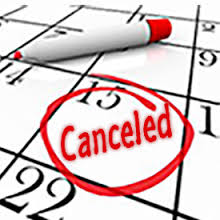The Top Physical Therapy Patient Scheduling Best Practices to Follow
Patient scheduling is as much an art as it is a science. While it makes sense to make room for as many patients in your schedule as possible, it’s also necessary to give yourself time to breathe — and your staff time to deal with administrative tasks.
Creating a system that follows the top patient scheduling best practices will make things run a lot smoother for your practice and allow for even more satisfied patients, and happier employees. Here are some of the best practices you should be using when it comes to patient scheduling in your office.
Use a Patient Portal
Patient portals are popular for a reason. Research shows that 83.3% of all patients have used a patient portal to schedule an appointment with a healthcare provider. That means that your patients are ready for a patient portal even if you’re not using one yet.
The HENO patient portal is convenient for patients and they can save you and your staff hours of time every day. By allowing patients to choose their own appointment time, you’ll give them a sense of control and streamline your practice.
Send Appointment Reminders
Appointments only help your practice when patients remember them and show up on time. One of the best ways to ensure that they do is to send regular appointment reminders. Here, we’re not talking about a single reminder, but a series of reminders that give your patients the opportunity to cancel or reschedule their appointment if necessary.
HENO has a system of built-in reminders that you can activate and use to minimize cancellations and no-shows. Setting reminders is useful for you, your staff and your patients.
Book Follow-Up Appointments Immediately
In any practice, it costs far more to attract a new patient than it does to retain an existing one. The key to profitability is to make sure that your existing patients make necessary follow-up appointments as early as possible.
The best practice here is to schedule your patient’s next appointment when they’re in the office — or to encourage them to schedule using the patient portal as soon as they’ve finished an appointment. That way, you have the security of knowing that your patient is scheduled and your system of automatic reminders will make it easy for them to keep their appointments.
Keep Patients Informed of Changes
Part of effective patient scheduling is to keep your patients informed if something changes. Scheduling issues can be frustrating for you, your staff, and your patients. Situations that affect your schedule may include:
- Changes to your availability
- Changes due to back-ups in your office
- Changes due to weather or emergency conditions
Setting up a broadcast system will help you let your patients know when their appointment is affected by outside forces. For example, if a snowstorm prevents you from getting to your practice on time, you can inform your early patients, so they can plan accordingly. The same is true if you’re sick or need to take time off for personal business.
Automate Referrals
Patient referrals can be an excellent way to attract new patients and grow your practice. However, referrals are only useful if you can take the patient who has been referred to your practice and get them to schedule an appointment as quickly as possible.
One way to accomplish that is to send out patient scheduling reminders to all referral patients who have not yet booked an appointment with you. This tactic can save your staff hours of time calling referral patients to book appointments. And, since many patients prefer self-scheduling, you can use the automated messages you send to direct patients to the portal.
View Scheduling Analytics to Make Your Practice More Efficient
Patient scheduling best practices are designed to make your practice as efficient and profitable as possible. The good news? If you choose an all-in-one practice management solution such as HENO, you’ll have access to the tools and analytics you need to fine-tune your patient scheduling process.
For example, you may be able to gather information that will show you why you’re experiencing scheduling bottlenecks. You can use scheduling analytics to track:
- Patient arrival times
- Patient waiting times
- Length of appointments
- Percentage of patients who schedule via the patient portal
- Time your staff spends scheduling appointments manually
You can even use analytics to determine the best times to send patient reminders about appointments. In other words, you can use your data to streamline your practice, make your staff more efficient, and improve the patient experience.
Patient scheduling is a priority for every healthcare provider. Using the best practices we’ve outlined here will help ensure that your scheduling procedures are efficient and accurate and that your patients have the best experience possible when they visit you.
Ready to learn how HENO can help you implement physical therapy patient scheduling best practices? Click here to schedule your free demo now!






